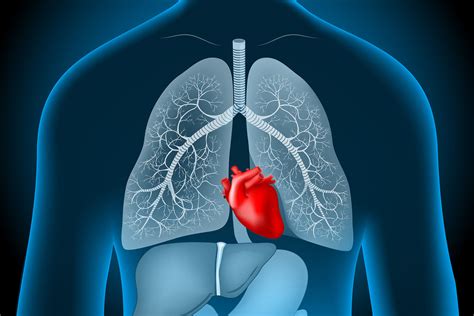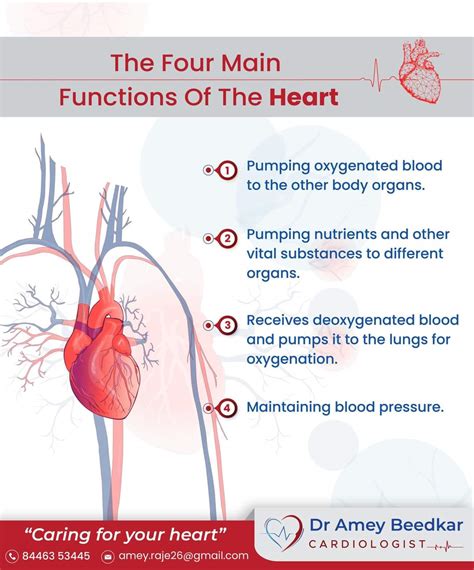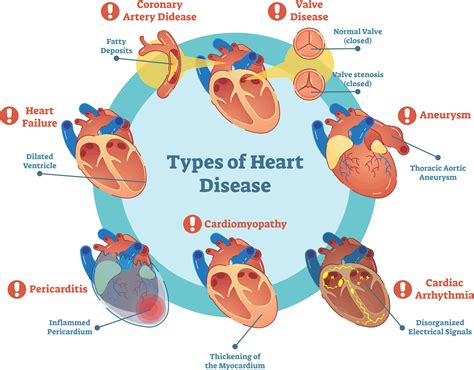Intro
Discover the location of your heart, nestled between lungs, in the thoracic cage, protected by ribcage, playing a vital role in cardiovascular health, cardiac function, and overall well-being.
The human heart is a vital organ that plays a crucial role in our overall health and well-being. It is responsible for pumping blood throughout our body, supplying oxygen and nutrients to our cells and organs. But have you ever wondered where exactly your heart is located in your body? Understanding the location and structure of the heart can help you appreciate its importance and take better care of it.
The heart is located in the thoracic cavity, which is the space between the lungs and the chest wall. It is situated slightly to the left of the midline of the body, and it is surrounded by the lungs, the trachea, and the esophagus. The heart is a muscular organ that is about the size of a fist, and it weighs around 10 ounces. It is made up of four chambers: the left and right atria, and the left and right ventricles. The atria are the upper chambers that receive blood from the veins, while the ventricles are the lower chambers that pump blood out of the heart and into the arteries.
The heart is a remarkable organ that beats around 100,000 times per day, pumping over 2,000 gallons of blood throughout the body. It is a complex and highly specialized organ that is made up of different types of cells, tissues, and structures. The heart is surrounded by a layer of tissue called the pericardium, which helps to protect it from injury and infection. The pericardium also produces fluid that helps to lubricate the heart and reduce friction between the heart and the surrounding tissues.
Heart Location and Structure

The location and structure of the heart are crucial for its function and overall health. The heart is surrounded by a layer of tissue called the epicardium, which helps to protect it from injury and infection. The epicardium also produces fluid that helps to lubricate the heart and reduce friction between the heart and the surrounding tissues. The heart is also surrounded by a network of nerves, including the vagus nerve, which helps to regulate heart rate and blood pressure.
Layers of the Heart
The heart is made up of three layers: the epicardium, the myocardium, and the endocardium. The epicardium is the outermost layer, which helps to protect the heart from injury and infection. The myocardium is the middle layer, which is made up of cardiac muscle cells that contract and relax to pump blood throughout the body. The endocardium is the innermost layer, which lines the chambers and valves of the heart.The layers of the heart work together to ensure that the heart functions properly. The epicardium helps to protect the heart from injury and infection, while the myocardium pumps blood throughout the body. The endocardium helps to regulate blood flow and prevent blood from flowing backwards into the heart. The heart also has a network of blood vessels, including the coronary arteries, which supply blood to the heart muscle itself.
Functions of the Heart

The heart is a remarkable organ that beats around 100,000 times per day, pumping over 2,000 gallons of blood throughout the body. It is a complex and highly specialized organ that is made up of different types of cells, tissues, and structures. The heart is surrounded by a layer of tissue called the pericardium, which helps to protect it from injury and infection. The pericardium also produces fluid that helps to lubricate the heart and reduce friction between the heart and the surrounding tissues.
Importance of Heart Health
Heart health is essential for our overall health and well-being. The heart is a vital organ that plays a crucial role in our body's overall function. When the heart is healthy, it pumps blood efficiently and effectively, supplying oxygen and nutrients to our cells and organs. However, when the heart is unhealthy, it can lead to a range of problems, including heart disease, high blood pressure, and stroke.Maintaining good heart health is essential for preventing these problems. This can be achieved through a combination of lifestyle changes, including a healthy diet, regular exercise, and stress management. It is also important to get regular check-ups with a healthcare provider to monitor heart health and catch any potential problems early.
Common Heart Problems

Other common heart problems include arrhythmias, which are irregular heartbeats, and heart failure, which is a condition in which the heart is unable to pump enough blood to meet the body's needs. These conditions can be caused by a range of factors, including genetics, lifestyle, and environmental factors.
Treatment and Prevention
Treatment and prevention of heart problems are essential for maintaining good heart health. This can be achieved through a combination of lifestyle changes, including a healthy diet, regular exercise, and stress management. It is also important to get regular check-ups with a healthcare provider to monitor heart health and catch any potential problems early.In addition to lifestyle changes, there are several medical treatments that can help to prevent and treat heart problems. These include medications, such as beta blockers and statins, which can help to lower blood pressure and cholesterol levels. There are also several surgical procedures, such as angioplasty and bypass surgery, which can help to treat heart disease and other conditions.
Heart Health and Lifestyle

A healthy diet should include a range of fruits, vegetables, whole grains, and lean protein sources. It is also important to limit intake of saturated and trans fats, sodium, and added sugars. Regular exercise, such as walking, running, or swimming, can help to improve cardiovascular health and reduce the risk of heart problems.
Importance of Regular Check-Ups
Regular check-ups with a healthcare provider are essential for maintaining good heart health. These check-ups can help to monitor heart health and catch any potential problems early. They can also help to identify risk factors, such as high blood pressure or high cholesterol, and provide guidance on lifestyle changes and medical treatments.It is recommended that adults have a check-up with a healthcare provider at least once a year. During this check-up, the provider will take a medical history, perform a physical exam, and order any necessary tests, such as blood work or an electrocardiogram.
Conclusion and Next Steps

We encourage you to take the next steps in maintaining good heart health. Start by making lifestyle changes, such as eating a healthy diet and getting regular exercise. Schedule a check-up with a healthcare provider to monitor your heart health and catch any potential problems early. By taking these steps, you can help to reduce your risk of heart problems and maintain good heart health for years to come.
What is the location of the heart in the human body?
+The heart is located in the thoracic cavity, which is the space between the lungs and the chest wall. It is situated slightly to the left of the midline of the body, and it is surrounded by the lungs, the trachea, and the esophagus.
What are the functions of the heart?
+The heart has several important functions, including pumping blood throughout the body, supplying oxygen and nutrients to our cells and organs, and regulating blood pressure and body temperature.
How can I maintain good heart health?
+Maintaining good heart health can be achieved through a combination of lifestyle changes, including a healthy diet, regular exercise, and stress management. It is also important to get regular check-ups with a healthcare provider to monitor heart health and catch any potential problems early.
What are some common heart problems?
+Some common heart problems include heart disease, high blood pressure, and stroke. These conditions can be caused by a range of factors, including genetics, lifestyle, and environmental factors.
How can I reduce my risk of heart problems?
+Reducing your risk of heart problems can be achieved through a combination of lifestyle changes, including a healthy diet, regular exercise, and stress management. It is also important to get regular check-ups with a healthcare provider to monitor heart health and catch any potential problems early.
